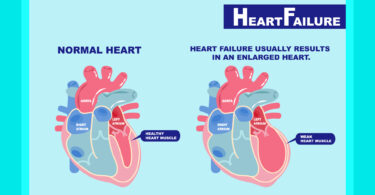Before we go into the history and impact of the Brunonian system within the broader scope of Romantic healthcare, we need to examine, assess and take into account the contribution and foundation provided by the germinal figure of his age, Wolfgang von Goethe, generally referred to simply as Goethe. Goethe’s contribution to science remains largely unappreciated and misunderstood, as it challenged the philosophical and scientific orthodoxy of his day. It is only with the advance of philosophy beyond Kant, into phenomenology, that Goethe’s genius and new approach to science can be and now is being appreciated.
Goethe’s challenge, based on his undertaking Kant’s daunting ‘adventure of reason’, was two-fold. First, it directly challenged the twin pillars of Enlightenment science: the dominance of the intellect and mentation as the source of all knowledge and the emphasis on inert nature, to the exclusion of all else as being ‘occult’ (hidden, obscure and therefore beyond the pale of science, that is, the inertial science of the mens). Second, it was based on the development and use of a new organ of cognizance, the old Greek noetic (participative) capacity raised to a new level, which Goethe called the Gemüt. This new organ operated on a different way of knowing, involving a direct participation of nature (natura naturans) – noetic kennen vs. mentative wissen, and a new way of thinking (denken vs. sinnen), which resulted in a new form of knowledge – Erkenntniss vs. Wissen. Gone is the artificial separation of subject and object created by the intellect, to be replaced by a unity of all phenomena; gone is the one-way, static perceiving of data, replaced by a dynamic interaction of observer and observed; and, gone is the focus on outer form and mechanics (natura naturata), replaced by the appreciation for the inner activity and living functions (natura naturans). Goethe’s work and scientific developments are only now beginning to be appreciated for what they offer regarding our knowledge of nature, but also because they offer a way out of the cul-de-sac of trying to apply the methodology of the inertial sciences to the science of life, of vital nature (natura naturans).
Goethe took a number of ideas into account: first, that life is a function of an antithetical unity of expansive and compressive powers, forces and energies (polar logic), and second that the forms of things was guided by an active power, the Platonic Idea, the Baconian lumens siccum, the Spinoistic adequate idea, which also operated in the mind (in what Coleridge termed the primary imagination), configuring raw, crude sense-experience into the concept of a given thing, such as a tree. For there to be a tree, and then for the mind to behold a tree, there has to be the super-sensible archetype ‘tree’.
Goethe championed the ‘rights of nature’ and life against the ‘rights of man’ and cold logic of the Englightenment, as embodied in his friend Schiller and in Kant’s philosophy, which undermined the power of nature and natural law in favor of human ‘law’ as developed by the intellect (a modern version of King Canute ordering the tides to cease). As the mentative mind separated man from nature, nature increasingly lost its life and power as a concept.
In this view of the ‘scientist as supreme artist’, Goethe directly challenged the Cartesian mind-body, subject-object split and the method of inertial science (physics) based on keeping as much of a distance between scientist and nature (paradoxically as it was nature they were studying). As Werner Heisenberg stated,
The renouncing of life and immediacy, which was the premise for the progress of all [inertial] science since Newton, formed the real basis for the bitter struggle which Goethe waged against the physical optics of Newton… (quoted in Man or Matter, Lehrs)
Goethe’s approach was to get as close to nature as possible, to take her in an intimate embrace but not by means of the intellect and reason (Sinn) or mentation (sinnen), but by means of a special organ of knowledge (for kennen) that involved a wholistic approach to knowledge (produced through real denken). This organ is the key to overcoming the limits of mental cognition (intellect), which limits Kant had identified. Kant held that science could only be that knowledge (Wissenschaft) that derived from mentation; he recognized that reason could also derive from intuition, but this was not regarded as ‘scientific’, as the intuitive power was not rationally understood.
What Goethe came bearing was the gift of a true and full natural science (naturata and naturans), based on the development of an organ of participation of natural (but also cultural and spiritual) phenomena, the Gemüt, that was able to have a living experience of the dynamic essence of a thing (Erlebniss and within the outer experiencing, Erfahrung), which act of participation brought forth a form of knowledge (erkenntniss) that was direct and situational rather than through the process of representation which separates the knowing (wissen) mentative self from the living experience (Erlebnis), cutting off the possibility of this other knowing (kennen).
Goethe and the Gemüt
Goethe’s approach was to use the Gemüt to participate, to embrace nature, not by means of the intellect (Sinn) and mentation (sinnen), but yet in a way that was rational and methodical, open to being verified, that is, public knowledge (‘objective’) and therefore, scientific, not ‘occult’. What Goethe was seeking was to experience the essence of a thing directly (Erlebnisse), and not indirectly, via an abstraction or secondary aspect, that is, to get at the phenomenon itself, as it truly is, as opposed to its outer appearance, to which the intellect had reduced it. Goethe is the founder of phenomenology.
With the Gemüt, one can approach nature and observe (participate) carefully, allowing a given phenomena within nature to express itself, as it has an ‘impressional basis’ rather than a sensory one. The pattern one sees provides and indeed is the theory (Greek – ‘seeing’). This is what Goethe meant by anschauende Erkenntnis where schauen (apperception) permeates sehen (perception). Goethe realised that the Sinn or mentative mind operated on the basis of separation and parts (subject-object), based on a particular form of thinking (sinnen) and could only provide a particular form of knowing (wissen) concerning inert nature (natura naturata) arising out of an outer form experience (Erfahrung), that is, inertial science (Wissenschaftslehre). To see unities, though also distinctions within them, required a different organ of knowledge, the Gemüt, operating through another form of thinking (denken), providing a knowledge (kennen) of vital nature (natura naturans) through a living participation (Erlebniss) that provides a method (-ology) for approaching vital nature (Erkenntnisslehre). One goes from the mathesis used to reveal the secrets of inertial science to the morphosis needed to uncover the mysteries of vital nature (phenomena, archetypes).
For Goethe, each area of nature required a different approach or Vorstellungsarten. The participative approach to living nature reveals the ideas within nature, the archetypes or Urphänomen (Coleridge’s ‘protophenomenon’) a virtual or pure activity, not an abstraction. To understand vital nature, one must become the instrument (Hahnemann’s Versuche Erlebnisse) and this experience of a phenomena is “remarkably like Fichte’s ‘activity into which an eye [imagination] has been inserted.” (Amrine). Goethe developed two dynamic concepts: one of polar logic (developed in his chromatology) – the ‘deeds and sufferings’ of light – and one of hierarchy or co-lateral logic (morphology). These concepts were developed in a practical and actual way in the realm of medicine by Hahnemann. Goethe’s approach to knowledge of vital nature (Erkenntniss) avoids the dead end created by the intellect in seeking to employ the only method it ‘trusts’, that of manufactured hypothesis and deduction based on the ‘facts’ extracted that fit the hypothesis. In this method, nature itself and sensory experience is distrusted and avoided where possible because of the problem of the structure of the scientist, and anything that cannot be quantified or rendered into mathematical expression (statistics) is rejected and deemed off limits (occult).
From Theory to Praxis
Goethe’s approach to Mother Nature found a practical application in Human Nature in the form of Healthcare, as can be found explicitly in the works of Dr. Samuel Hahnemann, one of the key scientists in the search for a new approach to healthcare, and medicine in particular. Goethe wrote several letters in 1820 mentioning and supporting ‘Hahnemann’s method’, ‘Hahnemann’s terminology’, and declaring his ‘confession of faith of a Hahnemannian disciple’, and indicating that he had read his works and looked forward to reflecting on ‘the wonder physician’. (Haehl, Vol. I, p. 113) Goethe was also aware of and followed Hahnemann’s dietary rules. In 1826, he wrote to the Grand Duke Karl August that his diet was ‘almost Hahnemannian in its strictness’.(Haehl, Vol I, p. 271)
If we examine Hahnemann’s writings, which are voluminous and readily available (as they would have been to Goethe), we can see what Goethe must have seen. Hahnemann recognized Goethe’s Gemüt, emotional mind and resonance organ as well as its polarity to the Geist or spiritual mind, the directive organ: Geistes oder Gemüths Zustandes des Kranken; Geistes- oder Gemüths-Krankheiten; gemüthlicher und geistiger Charakter; Gemüthsart; Gemüths- und Denkungs- Art; Geistes- und Gemüths-Organe’ Gemüths-Verstimmung.
Hahnemann further undertook the adventure of reason and observed first hand, through a living experience (Erlebnis) the impact of a natural Wesen (dynamic, living essential power) on a human Wesen (initially himself, and later other volunteers), producing a systematic image of the disturbance it produced in terms of pathology (alterations in feelings, functions and sensations) and semiology (outwardly perceptible signs), both over time in the one person, and then over time in a number of people giving an image (Bild) of the disturbance through its various expressions and manifestations, a Goethean approach. Indeed, the entire series and progression of provings or living experiences of medicinal substances by overtly healthy people constitutes an example of what Goethe was promoting as true scientific research. In his approach, Hahnemann avoided what Goethe considered the ‘greatest failure’ and fault of material science, namely the separation of experimenter from nature, producing abstract hypotheses (notions) and artificial approaches/treatments. Hahemann also sought to understand disease in its historical progression, as in the case of his Wesensgeschichte of Psora, the archetype (tonic) of inherited chronic disease, as well as its pleomorphic unfolding via numerous (gradated) levels of secondary (pathic) diseases, which then required a sequential (scalar) approach to treatment.
In Hahnemann’s distinction between the two sides of the Lebenskraft – the sustentive or Erhaltungskraft and the generative or Erzeugungskraft (Bildungstrieb), a polar logic identified in Goethe’s Chromatology – ‘the sufferings and deeds of light’, in the struggle between light energy (Licht) and dark energy (Finsternis). We also find this polarity, as well as Goethe’s distinction between the spectrum of dark and of light, in the distinction Hahnemann made between primary or tonic disease (based on a super-sensible knowing of psychic states involving alterations in circumstances, occurrents and behaviors via the Goethean Gemüt or super-sensible cognitive organ) and secondary or pathic disease (based on the sensible manifestation of life energy at the somatic level in terms of feelings, functions and sensations, as well as signs). For Goethe the turbid medium is the atmosphere (airy realm), for Hahnemann it is the living organism (fluid or etheric realm). Goethe’s interplay of Licht and Finsternis can also be seen in Hahnemann’s polarity between Geist (Spirit) and Wesen (Dynamis).
The objections that Goethe levelled against the taxonomy of Linnaeus in botany can be found in the medical sphere in Hahnemann’s trenchant criticism of the blindly empirical or abstractly intellectual nosology that took a few outer elements, arbitrarily conflated them, then confounded similarity of appearance here with identity of cause and origin. Hahnemann’s criticism also was based on an historical study of the morphology of this medical state of mind or Kurwesen, much as Goethe considered the study of history of a phenomenon as a form of knowledge (as did the Greeks). Equally, Hahnemann was critical of a static approach to disease nosology, which was constantly shape-shifting as the interaction between Krankheitwesen and Menschenwesen expressed different aspects of the same underlying disease (these being considered different diseases in the static Linnean nosology of materialistic medicine). Hahnemann also understood that there was an element of fixity and variability to disease, just as Goethe accepted a degree of form and structure at the physical level whilst pointing to the underlying dynamics leading to new forms over time (Darwin’s adaptation). What was important was the unity of the disease and an understanding of the relationship of its parts, both seen and yet-to-be seen, known and yet-to-be known. Hahnemann also understood that pathology arose out of a disturbance of the natural function of physiology, which ties in with Goethe’s later research and the Brunonian system as well.






